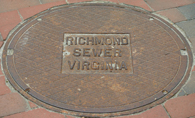I did something today that I never thought I’d actually do.
I don’t consider myself a hoarder, but my studio tells me that I’m in denial. So too, probably, would my husband. When you’re into genealogy, you have to document your research and that means paper, lots of paper (until you convert your stuff to digital) and after 25 years of researching, there’s not enough life left in me to scan all that stuff. I’ll have to do something about it sometime, but not now. I don’t have a large fabric stash, but I have more than I’d like to have and I need to make scrap quilts, lots of scrap quilts. I have 10+ years of quilting magazines.
At least I did. Until today.
I always thought these magazines had value to someone out there and I should have a yard sale. I just couldn’t throw them out. But then I saw the multitudes of magazines that had been donated to the group I sew with. I’ll bet nobody looks at them, they’re stored out in the garage. So I realized that the magazines really don’t have much value. Sure, they’ve got quilt patterns, but the fabrics featured and advertised are outdated, techniques and tools are outdated, and who has the time to go through them?
So I saved the ones that had patterns I’d flagged and took the rest (pictured above) to the recycling center. I’m going to review those flagged items to see if they still matter to me. If not, out they go, too.
So I unloaded about half my magazine stash. And a lot of dust LOL.
I divided the remaining mags by title and found that the largest stack was Quilter’s Newsletter, followed by Fons & Porter (which was a surprise as I really dislike their TV shows), McCall’s Quilting and Quiltmaker. The smallest stacks read like a time capsule: Miniature Quilts (those are really old), Quilts with Style. Do you remember that magazine? It was published by a husband and wife (in Virginia as I recall) and it was all about paper-pieced designs. Really complex designs. Beautiful designs. The magazine is no longer published but the couple now runs equiltpatterns.com. There was a Quilter’s Home issue, which went out of print in 2011. That magazine was started by Mark Lipinski, you either loved him or hated him. I don’t know what he’s doing now, didn’t he have a kidney transplant or something?
I love magazines of all kinds and I have to work hard to control the amount I leave laying around the house. I get comped on a number of magazines through work, which I bring home, and if I’m at Barnes & Noble, there is usually a quilting magazine or two that come home with me.
Next up, to go through my photography/Photoshop books.


































